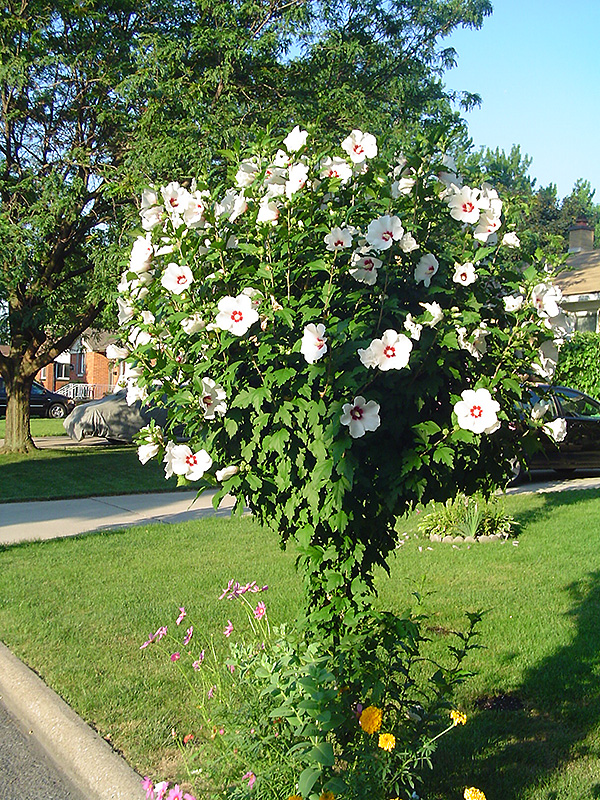Rose Of Sharon, Red Heart Hibiscus syriacus 'Red Heart' Height: 12 feet Spread: 10 feet
Sunlight:
Hardiness Zone: 5b Other Names: Shrub Althea Description: A wonderfully distinctive variety of this old-fashioned favorite featuring ostentatious pure white flowers with the most prominent rich ruby-red blotch at the base of each petal surrounding a white stamen cone; commands attention in the garden Ornamental Features Rose Of Sharon, Red Heart features bold white trumpet-shaped flowers with ruby-red centers along the branches from mid summer to early fall. It has green deciduous foliage. The lobed leaves do not develop any appreciable fall color. Landscape Attributes Rose Of Sharon, Red Heart is a multi-stemmed deciduous shrub with an upright spreading habit of growth. Its average texture blends into the landscape, but can be balanced by one or two finer or coarser trees or shrubs for an effective composition. This shrub will require occasional maintenance and upkeep, and is best pruned in late winter once the threat of extreme cold has passed. It is a good choice for attracting butterflies and hummingbirds to your yard, but is not particularly attractive to deer who tend to leave it alone in favor of tastier treats. It has no significant negative characteristics. Rose Of Sharon, Red Heart is recommended for the following landscape applications; Planting & Growing Rose Of Sharon, Red Heart will grow to be about 12 feet tall at maturity, with a spread of 10 feet. It tends to be a little leggy, with a typical clearance of 1 foot from the ground, and is suitable for planting under power lines. It grows at a medium rate, and under ideal conditions can be expected to live for 40 years or more. This shrub does best in full sun to partial shade. It prefers to grow in average to moist conditions, and shouldn't be allowed to dry out. This plant should be periodically fertilized throughout the active growing season with a specially-formulated acidic fertilizer. It is not particular as to soil type or pH. It is highly tolerant of urban pollution and will even thrive in inner city environments. This is a selected variety of a species not originally from North America.![]()
![]()
![]()
![]()
![]()
![]()
![]()
![]()
![]()
![]()
![]()
![]()


